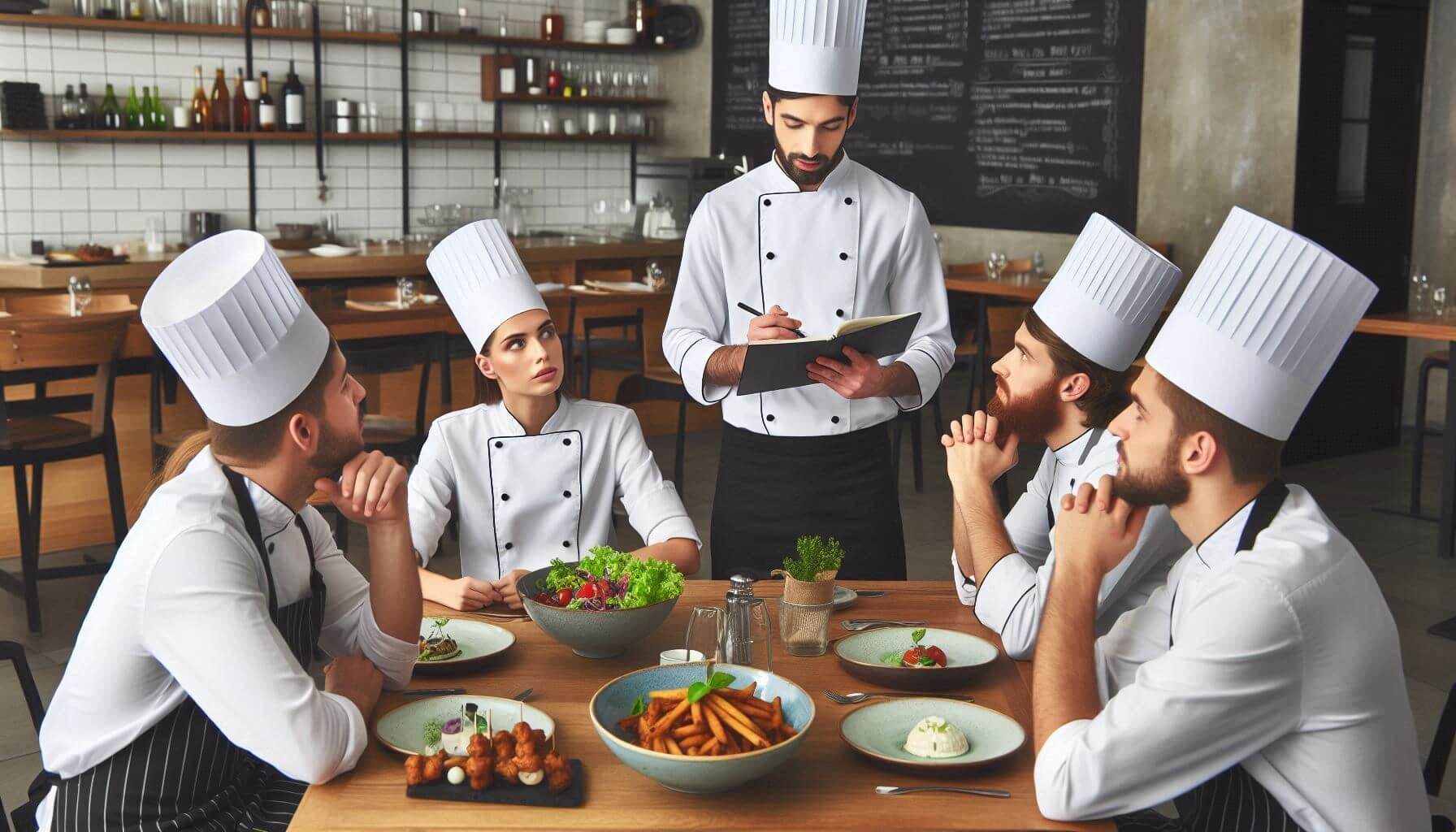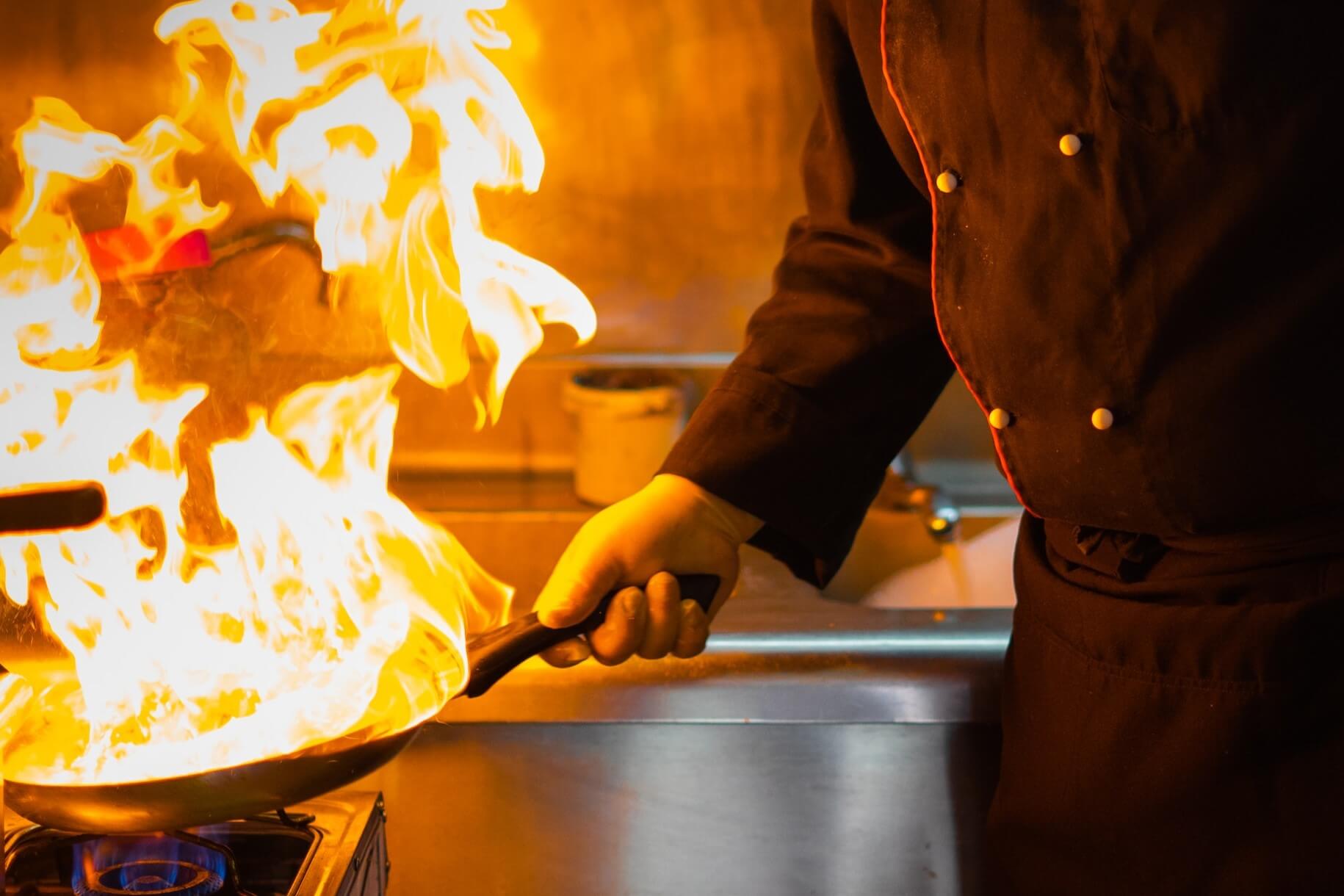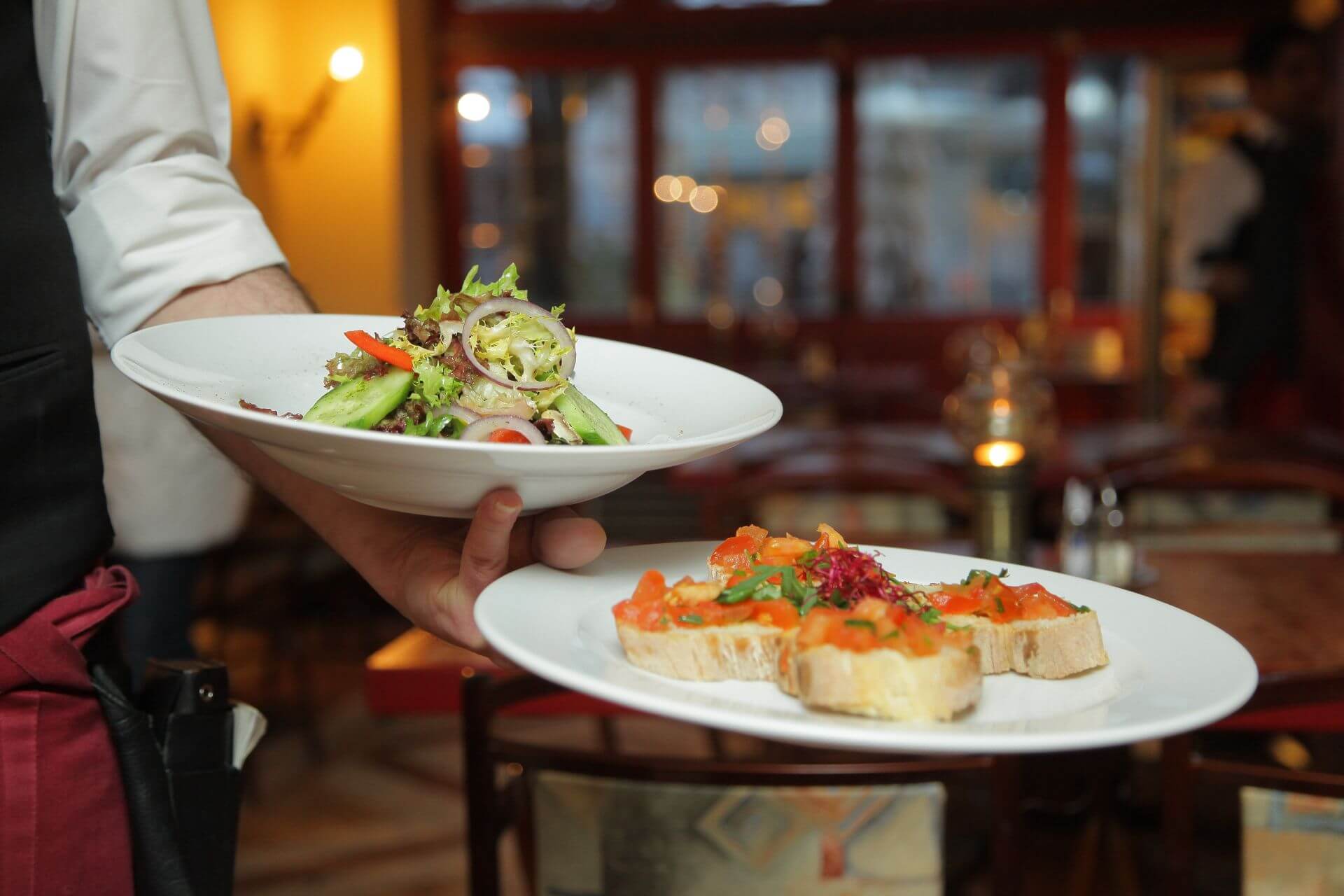Connected in the Kitchen: Building a Cohesive Culinary Team
by Nathen Dubé

Microsoft Designer seems to think all chefs have beards.
The connections we build within our teams, with our purveyors, and, ultimately, with our guests, shape every aspect of the dining experience.
In the culinary world, teamwork is not just a concept; it’s the foundation of success. Over my 25 years in the hospitality industry, I’ve seen firsthand how crucial these relationships are.
Join me as I delve into the crucial role of teamwork in the kitchen, and how it influences every aspect of the culinary journey.
The Importance of Teamwork in the Kitchen
A cohesive team is essential in a kitchen. When everyone works together seamlessly, efficiency improves, and food quality reaches new heights.
The synergy within the team impacts the dining experience directly, creating a sense of unity that customers can sense in every bite.
A busy kitchen’s energy can be chaotic, but a strong team turns that chaos into a symphony of coordinated efforts. When each member understands their role and executes it well, the result is a smooth, efficient operation that consistently delivers high-quality dishes to diners.
Take, for example, the dynamics of a typical dinner rush. The kitchen is busy with activity, with chefs, line cooks, and servers all working together to meet the demands of a packed dining room. Each movement is choreographed to ensure that dishes are prepared to perfection, and delivered quickly.
This level of efficiency is only possible when there is a deep sense of teamwork and mutual understanding among all members of the kitchen brigade.
Strategies for Fostering Collaboration
Effective Communication
Communication is the backbone of a well-functioning kitchen. Clear and open channels of communication ensure that everyone is on the same page, preventing misunderstandings and mistakes. Regular briefings and feedback sessions create a transparent environment where issues can be addressed proactively.
However, effective communication goes beyond daily briefings. It involves creating a culture where team members feel comfortable voicing their concerns and suggestions. This openness fosters a collaborative atmosphere in which everyone contributes to the kitchen’s success.
For instance, a simple pre-service briefing can highlight the evening’s menu, identify potential challenges, and assign specific tasks, ensuring that everyone knows what to expect. Such briefings not only prevent problems but also allow for real-time feedback, enabling continuous improvement.
Additionally, adopting digital communication tools like kitchen display systems can further streamline operations by providing instant updates on orders and modifications, reducing the risk of errors and enhancing overall efficiency.
Role Clarity and Responsibilities
In a busy kitchen, knowing exactly what’s expected of you is crucial. Role clarity reduces confusion and fosters accountability, ensuring that everyone can focus on their specific tasks without overlap or conflict.
Each role must be defined clearly to maintain order during peak times. When each team member understands their responsibilities this streamlines operations, and minimizes the potential for errors.
Clear roles also enhance individual accountability, as everyone knows what their responsibilities.
Consider the different stations in a kitchen: the sauté chef, the pastry chef, the garde manger, and so on. Each role is distinct, with specific duties and responsibilities. When everyone understands their role and how it fits into the larger picture, the kitchen runs like a well-oiled machine.
This clarity is particularly important during high-pressure situations, where any ambiguity can lead to mistakes and delays.
Team Building Activities
Team-building activities tailored for kitchen staff can enhance camaraderie and teamwork significantly. These activities foster a sense of unity and create bonds that translate into better collaboration during service.
Simple activities like group cooking challenges or team outings can break the routine, and build stronger relationships. When team members understand and trust each other, they work together more effectively, creating a more harmonious and efficient kitchen environment.
One effective team-building exercise involves rotating roles for a day. This allows team members to experience different aspects of the kitchen operation, fostering empathy and understanding. Another idea is organizing off-site events, such as cooking competitions or farm visits, which can strengthen the team’s bond outside the hectic environment of the kitchen.
Additionally, hosting regular team-building workshops focused on communication skills, conflict resolution, and stress management can equip team members with the tools they need to work together more effectively under pressure.
Continuous Learning and Development
Ongoing training and skill development are vital for maintaining a culture of learning and innovation in the kitchen. Encouraging continuous learning not only enhances individual skills but also strengthens the team as a whole.
Workshops, training sessions, and even informal knowledge-sharing sessions can keep the team updated on the latest culinary techniques and trends. This culture of continuous development ensures that the team remains adaptable and innovative, ready to tackle new challenges and improve their craft.
For example, inviting guest chefs to conduct classes or arranging for team members to attend culinary festivals and exhibitions can provide valuable exposure to new ideas and techniques. These experiences not only enhance the team’s skills but also inspire creativity and innovation in the kitchen.
Consider fostering a culture of mentorship, in which experienced chefs take on the role of guiding and nurturing newer team members. Doing so can create a supportive learning environment that benefits everyone involved.
Creating a Positive Work Environment
A respectful and supportive work culture is essential for a productive kitchen. Recognizing and celebrating team achievements boosts morale and motivates everyone to perform at their best.
Creating a positive work environment involves acknowledging the efforts of each team member and celebrating successes, no matter how small. This recognition fosters a sense of pride and belonging, leading to increased job satisfaction and better performance.
One way to create a positive work environment is to establish a system for regular performance reviews and feedback. This not only helps identify areas for improvement but also provides an opportunity to recognize and reward outstanding performance.
Additionally, implementing initiatives such as employee wellness programs, flexible scheduling, and opportunities for professional development can contribute to a more supportive and fulfilling work environment.
When team members feel valued and supported, they are more likely to be engaged and motivated, leading to better overall performance.
Leadership and Its Role in Team Dynamics
Leadership plays a pivotal role in shaping team dynamics and morale. Effective kitchen leaders lead by example, show empathy, and make decisive choices that inspire confidence and respect among team members.
Good leadership is about more than just managing tasks; it’s about inspiring and guiding the team. Effective leaders create an environment where teamwork thrives, and everyone feels valued and motivated to contribute their best.
One crucial aspect of effective leadership is the ability to communicate a clear vision and set achievable goals. By providing direction and clarity, leaders can help the team stay focused and aligned with the overall objectives of the kitchen.
It’s important to foster a culture of transparency and openness. Team members should feel comfortable sharing their ideas and concerns. This will enhance trust and collaboration within the team.
Leaders who actively listen to their team members and involve them in decision-making processes create a sense of ownership and accountability that drives performance.
Finally, leading by example—demonstrating a strong work ethic, maintaining a positive attitude, and showing respect for all team members—can set the tone for the entire kitchen. When team members see their leaders embodying the values and behaviors they aspire to, they are more likely to follow suit.
Conclusion
In the culinary world, teamwork is the secret ingredient to success. From the relationships we build with food purveyors to the final dish we present to guests, every aspect of the dining experience is enhanced by a connected team.
Implementing strategies such as effective communication, role clarity, team-building activities, continuous learning, and positive leadership is essential for fostering collaboration and achieving culinary excellence.
I encourage you to implement these strategies in your kitchens and share your experiences. Together, we can create culinary masterpieces that leave a lasting impression on our guests.
Building and leading culinary teams has been a rewarding journey, filled with challenges and triumphs. The power of teamwork has not only shaped my career but also the experiences of countless diners.
As we continue to evolve in the culinary world, let’s remember that our strength lies in our connections, and through them, we can achieve extraordinary culinary excellence. The journey of building a cohesive kitchen team is ongoing, but the rewards are well worth the effort.
Let’s strive to create kitchens where teamwork, respect, and passion for food come together to create unforgettable dining experiences.
Image: Microsoft Designer














